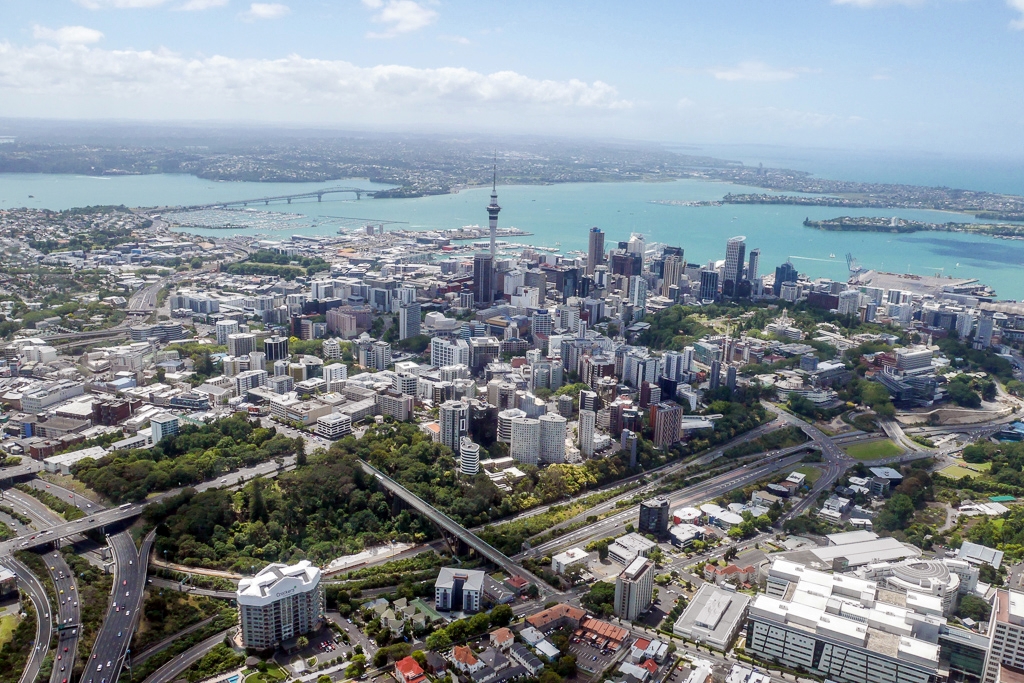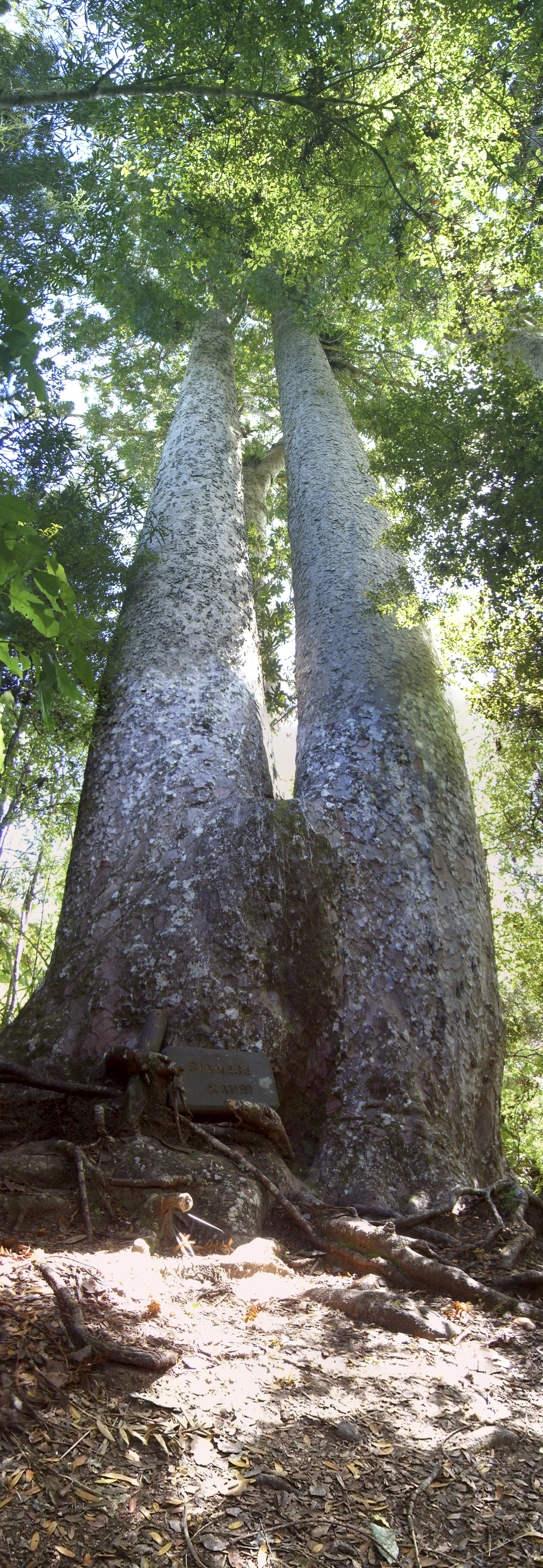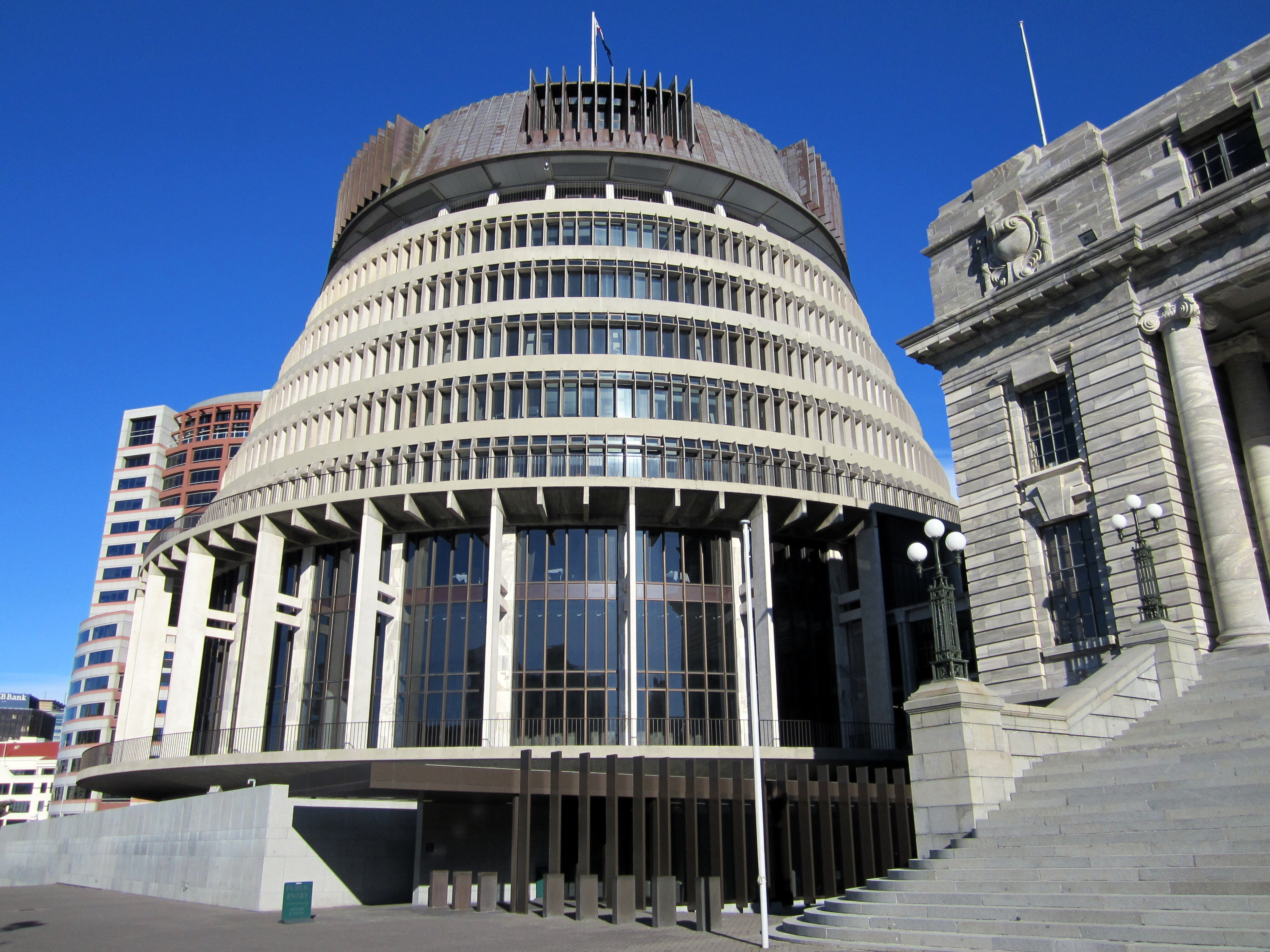|
Mount Donald McLean
Te Rau-o-te-Huia / Mount Donald McLean is a hill in the Waitākere Ranges of the Auckland Region of New Zealand's North Island. It is located to the south of the ranges, near the township of Huia. It is the highest peak of the Waitākere Ranges that borders the Manukau Harbour. Geography and geology The hill is a peak in the Waitākere Ranges, approximately northwest from Little Huia. The hill is the source for the south-flowing Baker Stream, and some of the tributaries of the east-flowing Marama Stream. The hill is accessible by Mt Donald McLean Road along Whatipu Road, or by two walking tracks: the Puriri Ridge Track and the Donald McLean Track. A prominent viewing platform can be found at the summit, from which Mount Taranaki can be seen on a clear day. Te Rau-o-te-Huia / Mount Donald McLean is a part of the Waitākere volcano, which first began erupting 23 million years ago, during the Miocene era. Most of the volcano had eroded by five million years ago, except for t ... [...More Info...] [...Related Items...] OR: [Wikipedia] [Google] [Baidu] |
North Island
The North Island ( , 'the fish of Māui', historically New Ulster) is one of the two main islands of New Zealand, islands of New Zealand, separated from the larger but less populous South Island by Cook Strait. With an area of , it is the List of islands by area, world's 14th-largest island, constituting 43% of New Zealand's land area. It has a population of which is % of New Zealand's residents, making it the most populous island in Polynesia and the List of islands by population, 28th-most-populous island in the world. Twelve main urban areas (half of them officially cities) are in the North Island. From north to south, they are Whangārei, Auckland, Hamilton, New Zealand, Hamilton, Tauranga, Rotorua, Gisborne, New Zealand, Gisborne, New Plymouth, Napier, New Zealand, Napier, Hastings, New Zealand, Hastings, Whanganui, Palmerston North, and New Zealand's capital city Wellington, which is located at the south-west tip of the island. Naming and usage The island has been known ... [...More Info...] [...Related Items...] OR: [Wikipedia] [Google] [Baidu] |
Veronica Bishopiana
''Veronica bishopiana'', the Waitākere rock koromiko, is a flowering plant belonging to the family Plantaginaceae. It is native to West Auckland, New Zealand, West Auckland in New Zealand, and was first described by Donald Petrie (botanist), Donald Petrie in 1926.Petrie (1926), In: Trans. & Proc. N. Z. Inst. 56: 15 Description ''Veronica bishopiana'' is a low spreading shrub that grows up to one metre tall. While similar to ''Veronica obtusata'' in appearance, ''Veronica bishopiana'' tends to be larger, and has distinctive maroon-green leaves. The shrub has white and mauve-coloured flowers, with the mauve colour often only evident in the youngest buds of the plant. Taxonomy It was named by Donald Petrie (botanist), Donald Petrie in 1926, first described as a hybrid, ''Veronica × bishopiana''. It was transferred the genus ''Hebe (plant), Hebe'' in 1966 by ED Hatch, but has since been reclassified again as a species of ''Veronica (plant), Veronica''. The species was named for ... [...More Info...] [...Related Items...] OR: [Wikipedia] [Google] [Baidu] |
Rangitoto
Rangitoto Island is a volcanic island in the Hauraki Gulf near Auckland, New Zealand. The wide island is a symmetrical shield volcano cone capped by central scoria cones, reaching a height of . Rangitoto is the youngest and largest of the approximately 50 volcanoes of the Auckland volcanic field, having erupted in two phases about 1450 CE and 1500 CE and covering an area of . It is separated from the mainland of Auckland's North Shore by the Rangitoto Channel. Since World War II, it has been linked by a causeway to the much older, non-volcanic Motutapu Island. is Māori for 'Bloody Sky',What happened to local Maori? (from the Rangitoto page on the website) with the name c ... [...More Info...] [...Related Items...] OR: [Wikipedia] [Google] [Baidu] |
Auckland City Centre
The Auckland Central Business District (CBD), or Auckland city centre, is the geographical and economic heart of the Auckland metropolitan area. It is the area in which Auckland was established in 1840, by William Hobson on land gifted by ''mana whenua'' ''hapū'' Ngāti Whātua Ōrākei. It is New Zealand's leading financial hub, and the centre of the country's economy; the GDP of the Auckland Region was NZD$139 billion in the year ending September 2023. The CBD is one of the most densely developed places in New Zealand, with many commercial and some residential developments packed into a space of only . The area is made up of the city's largest concentration of skyscrapers and businesses. Bounded by several major motorways and by the harbour coastline in the north, it is surrounded further out by mostly suburban areas; it is bounded on the North by Waitematā Harbour, east by Parnell, southeast by Grafton, south by Mount Eden, southwest by Newton, west by Freemans Bay an ... [...More Info...] [...Related Items...] OR: [Wikipedia] [Google] [Baidu] |
Leptospermum Scoparium
''Leptospermum'' is a genus of shrubs and small trees in the myrtle family Myrtaceae commonly known as tea trees, although this name is sometimes also used for some species of '' Melaleuca''. Most species are endemic to Australia, with the greatest diversity in the south of the continent, but some are native to other parts of the world, including New Zealand and Southeast Asia. Leptospermums all have five conspicuous petals and five groups of stamens which alternate with the petals. There is a single style in the centre of the flower and the fruit is a woody capsule. The first formal description of a leptospermum was published in 1776 by the German botanists Johann Reinhold Forster and his son Johann Georg Adam Forster, but an unambiguous definition of individual species in the genus was not achieved until 1979. Leptospermums grow in a wide range of habitats but are most commonly found in moist, low-nutrient soils. They have important uses in horticulture, in the produc ... [...More Info...] [...Related Items...] OR: [Wikipedia] [Google] [Baidu] |
Agathis Australis
''Agathis australis'', commonly known as kauri, is a species of coniferous tree in the family Araucariaceae, found north of 38°S in the northern regions of New Zealand's North Island. It is the largest (by volume) but not tallest species of tree in New Zealand, standing up to tall in the emergent layer above the forest's main canopy. The tree has smooth bark and small narrow leaves. Other common names to distinguish ''A. australis'' from other members of '' Agathis'' are southern kauri and New Zealand kauri. With its podsolization capability and regeneration pattern it can compete with faster growing angiosperms. Because it is such a conspicuous species, forest containing kauri is generally known as kauri forest, although kauri need not be the most abundant tree. In the warmer northern climate, kauri forests have a higher species richness than those found further south. Kauri even act as a foundation species that modify the soil under their canopy to create unique plan ... [...More Info...] [...Related Items...] OR: [Wikipedia] [Google] [Baidu] |
Pākehā
''Pākehā'' (or ''Pakeha''; ; ) is a Māori language, Māori-language word used in English, particularly in New Zealand. It generally means a non-Polynesians, Polynesian New Zealanders, New Zealander or more specifically a European New Zealanders, European New Zealander. It is not a legal term and has no definition under New Zealand law. ''Papa'a'' has a similar meaning in Cook Islands Māori. Etymology and history The etymology of is uncertain. The most likely sources are the Māori words or , which refer to an oral tale of a "mythical, human like being, with fair skin and hair who possessed canoes made of reeds which changed magically into sailing vessels". When Europeans first arrived they rowed to shore in longboats, facing backwards: In traditional Māori canoes or , paddlers face the direction of travel. This is supposed to have led to the belief by some, that the sailors were ''patupaiarehe'' (supernatural beings). There have been several dubious interpretati ... [...More Info...] [...Related Items...] OR: [Wikipedia] [Google] [Baidu] |
Māori People
Māori () are the Indigenous peoples of Oceania, indigenous Polynesians, Polynesian people of mainland New Zealand. Māori originated with settlers from East Polynesia, who arrived in New Zealand in several waves of Māori migration canoes, canoe voyages between roughly 1320 and 1350. Over several centuries in isolation, these settlers developed Māori culture, a distinct culture, whose language, mythology, crafts, and performing arts evolved independently from those of other eastern Polynesian cultures. Some early Māori moved to the Chatham Islands, where their descendants became New Zealand's other indigenous Polynesian ethnic group, the Moriori. Early contact between Māori and Europeans, starting in the 18th century, ranged from beneficial trade to lethal violence; Māori actively adopted many technologies from the newcomers. With the signing of the Treaty of Waitangi, Treaty of Waitangi/Te Tiriti o Waitangi in 1840, the two cultures coexisted for a generation. Rising ten ... [...More Info...] [...Related Items...] OR: [Wikipedia] [Google] [Baidu] |
Donald McLean (New Zealand Politician)
Sir Donald McLean (27 October 1820 – 5 January 1877) was a 19th-century New Zealand politician and government official. He was involved in negotiations between the settler government and Māori from 1844 to 1861, eventually as Native Secretary and Land Purchase commissioner. He was one of the most influential figures in Māori-Pākehā relations in the mid-1800s and was involved in the dispute over the "Waitara Purchase", which led up to the First Taranaki War. Early life He was born on the Hebridean island of Tiree, and came to New Zealand via Australia in 1840. He married Susan Douglas Strang, daughter of the registrar of the Supreme Court in Wellington, Robert Strang, on 28 August 1851. She died after giving birth to their son Douglas in December 1852 and her death deeply affected McLean; he never remarried. Political career McLean was involved in negotiations between the settler government and Māori from 1844 to 1861, eventually as Native Secretary and Land Purchase ... [...More Info...] [...Related Items...] OR: [Wikipedia] [Google] [Baidu] |
New Zealand Government
The New Zealand Government () is the central government through which political authority is exercised in New Zealand. As in most other parliamentary democracies, the term "Government" refers chiefly to the executive branch, and more specifically to the Ministry (collective executive), collective ministry directing the executive. Based on the principle of responsible government, it operates within the framework that "the reigns, but the government rules, so long as it has the support of the New Zealand House of Representatives, House of Representatives".Sir Kenneth Keith, quoted in the Cabinet Manual'. The ''Cabinet Manual (New Zealand), Cabinet Manual'' describes the main laws, rules and Constitutional convention (political custom), conventions affecting the conduct and operation of the Government. Executive power is exercised by Ministers in the New Zealand Government, ministers, all of whom are sworn into the Executive Council of New Zealand, Executive Council and accounta ... [...More Info...] [...Related Items...] OR: [Wikipedia] [Google] [Baidu] |
Huia
The huia ( ; ; ''Heteralocha acutirostris'') is an extinct species of New Zealand wattlebird, endemic to the North Island of New Zealand. The last confirmed sighting of a huia was in 1907, although there was another credible sighting in 1924. It was already a rare bird before the arrival of Europeans, confined to the Ruahine, Tararua, Rimutaka and Kaimanawa mountain ranges in the south-east of the North Island. It was remarkable for its pronounced sexual dimorphism in bill shape; the female's beak was long, thin and arched downward, while the male's was short and stout, like that of a crow. Males were long, while females were larger at . The sexes were otherwise similar, with orange wattles and deep metallic, bluish-black plumage with a greenish iridescence on the upper surface, especially about the head. The tail feathers were unique among New Zealand birds in having a broad white band across the tips. The birds lived in forests at both montane and lowland elevation ... [...More Info...] [...Related Items...] OR: [Wikipedia] [Google] [Baidu] |
Kāinga
A kāinga ( southern Māori: ''kaika'' or ''kaik'') is the traditional form of village habitation of pre-European Māori in New Zealand. It was unfortified or only lightly fortified, and over time became less important than the well-fortified pā. Description Kāinga were generally unfortified or only lightly fortified, as opposed to the well-defended pā. They were generally coastal, and often found near to a river mouth. The settlement was generally occupied by members of one ''hapū'' (sub-tribe), which would identify itself with the nearest mountain and river (even in modern Māori, when meeting someone new, "what is your mountain?" is not an unusual question, and naming a mountain and river is a standard part of a traditional introduction or '' pepeha''). Kāinga were often regarded as only semi-permanent settlements, and they were often abandoned. Reasons for abandonment included invasion by other iwi or resource shortages. Traditionally, Māori were often semi-nomadic, ... [...More Info...] [...Related Items...] OR: [Wikipedia] [Google] [Baidu] |





